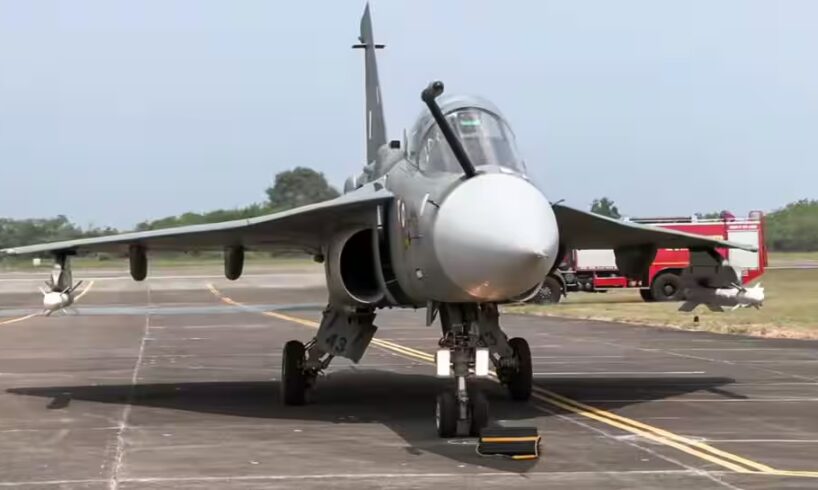
The world has finally acknowledged what India has known for years: the Indian Air Force doesn’t just talk about power, it demonstrates it. While China boasts about its fleet size and Russia relies on Cold War legacy, India has done what matters most: proven its combat capability in real operations, built a balanced and diversified force, and developed indigenous technology that makes the nation self-reliant.
The World Directory of Modern Military Aircraft has released its 2025 Global Air Power Rankings, placing India in a historic third position that validates years of strategic investments and operational excellence. The US Air Force tops the rankings with 242 points, followed by Russia with 114 points, while India claims the coveted third spot with 69.4 points, decisively pushing China down to fourth position with 63.8 points. Japan rounds out the top five with 58.1 points.
India’s Decisive Edge Over China
Add Zee News as a Preferred Source
What propelled India past China in these rankings? The answer lies in a metric that cannot be faked or inflated: actual combat experience and demonstrated warfighting capability. In 2019, the Indian Air Force executed the Balakot airstrike deep inside Pakistan’s airspace, successfully destroying its target and returning safely despite hostile territory. This year’s Operation Sindoor showcased even more impressive capability, with the IAF achieving 100 percent hit accuracy while losing zero aircraft, a testament to operational excellence that few air forces worldwide can match.
While India has repeatedly demonstrated its aerial combat prowess in real-world operations against actual adversaries, China’s air force hasn’t participated in any major conflict for decades. This stark experience gap proved decisive in the rankings, as theoretical capability means little compared to proven performance under fire. India fights and wins; China trains and speculates.
#DNAWithRahulSinha | WDMMA #DNA #IndianAirForce… pic.twitter.com/BWF30J1j0o – Zee News (@ZeeNews) October 17, 2025
The World Directory of Modern Military Aircraft also praised the IAF’s balanced fleet composition. Among its total aircraft, 31.6% are fighter jets, 29% are helicopters, 21.8% are trainer aircraft, and 17.6% are drones or reconnaissance planes. In contrast, 52.9% of China’s fleet is fighters, making its force less diversified.
India’s ranking was further boosted by the diversity of its aircraft inventory. The IAF operates French-built Rafales and Mirage-2000s, Russian-origin Su-30s now produced domestically, and U.S.-made Apache and Chinook helicopters. India’s multi-country sourcing ensures it isn’t dependent on any single nation for maintenance or equipment.
Another parameter considered by WDMMA is a country’s indigenous inventory. In this domain, India has taken a major step with the Tejas MK-1A, which completed its maiden flight from Nashik today. Defense Minister Rajnath Singh called it a moment of national pride and rightly so.
The Tejas MK-1A represents the most advanced version of the indigenous Tejas fighter. It is a multirole supersonic aircraft with a maximum range of 3,000 kilometers. It is integrated with the BrahMos missile and compatible with Harpoon anti-ship missiles. Equipped with eight hardpoints, it can carry up to 5,300 kilograms of weapons, bombs, and missiles. Beyond strike capability, it can also perform patrol and reconnaissance missions.
Despite its advanced technology, each Tejas costs about Rs 306 crore to produce, significantly cheaper than imported fighters. Since it is built entirely in India, maintenance and parts are also cost-effective. Currently, 40 Tejas aircraft are deployed with the IAF, and the Navy is expected to receive variants equipped with anti-ship missiles.
The Tejas MK-1A As Symbol Of Transformation
The maiden flight of the Tejas MK-1A, coinciding with India’s ascent to third position in global air power rankings, carries deep symbolic significance. Just two decades ago, skeptics dismissed India’s ability to design and build a modern fighter aircraft, pointing to decades of unsuccessful attempts and continued dependence on foreign suppliers. Today, as the Tejas MK-1A takes to the skies, those doubts have been comprehensively demolished. The aircraft represents not just technological achievement but a transformation in India’s defense industrial base.





